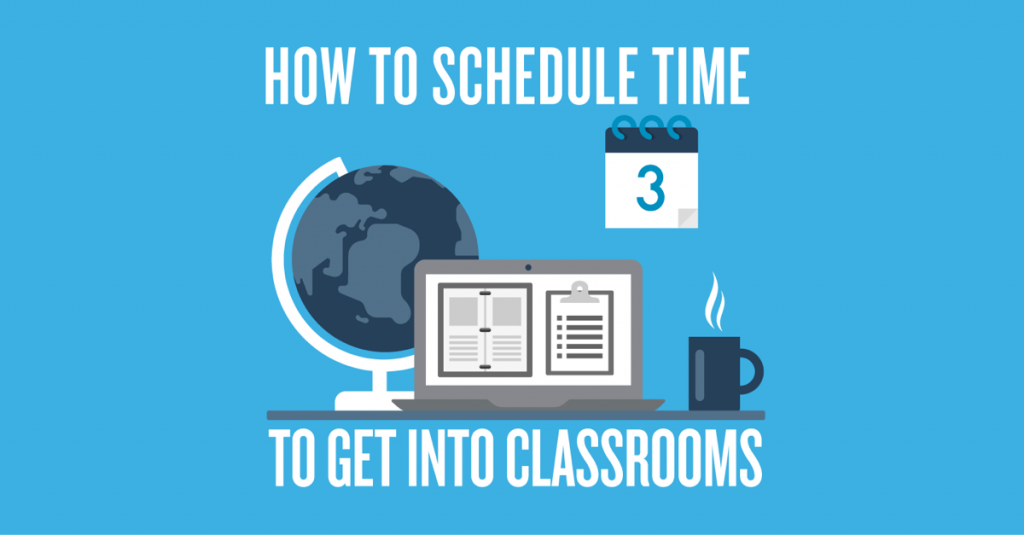
You're busy. You have a ton to do, and your day is full of meetings, punctuated by emergencies. So how can you make time to get into classrooms?
That's what we explore in the Instructional Leadership Challenge, and I thought I'd elaborate a bit on this particular strategy.
If you want to do regular walkthroughs—we suggest 10% of your classrooms per day, so you get to everyone on a 10-day rotation—you'll need to make sure your schedule reserves time for them.
You can try to squeeze walkthroughs into spare moments, but as the old saying goes, if it doesn't get scheduled, it doesn't get done.
Let's say you have 30 teachers, so to visit 10% per day, you'll need to do 3 walkthroughs per day. If you need to do three walkthroughs, you need to set aside 3 timeslots, right?
Well, not quite. There's a good chance you'll get interrupted or prevented from keeping some of those appointments with yourself.
Emergencies come up, meetings run over, and you know in the back of your mind that walkthroughs can wait.
So all too often, walkthroughs get pushed back. They get pushed aside. And they hardly ever happen.
I don't have hard numbers on this, but my ballpark estimate is that most administrators do 1 or 2 walkthroughs a week. It's not enough.
And what's worse is that they don't visit people systematically. They make the most visits to the teachers who are:
- Nearby
- Nice
- Doing a good job, and
- Receptive to feedback
Guess what that leaves out? The classrooms we most need to be in.
We can do better. But we'll need to address three problems:
- Interruptions
- Sticking to the plan
- Keeping visits brief yet impactful
Realistic Scheduling
To schedule walkthroughs so they actually happen, we need to plan for the inevitable…and interruptions are inevitable.
It's simple: simply take the number of walkthroughs you want to do in a day, and multiply it by 1.5, 2, or even 3.
If you need to do 3 walkthroughs a day, schedule 5 or 6 timeslots. If you're an assistant principal and get interrupted by discipline issues constantly, schedule 9 timeslots.
Pick a multiplier that matches your likelihood of interruption, calculate the total number of timeslots you need, and schedule them.
Now, you might be thinking “I can't schedule 9 timeslots in a day!” But of course you can…if they're short.
You don't need more than 10 minutes to get to a classroom, stay for a few minutes, and put together some notes and feedback (more on how to do this—and the mistakes to avoid—in the Instructional Leadership Challenge).
You can schedule nine 10-minute timeslots (90 minutes) in a 6 or 7 hour school day. It's a lot of the day, sure—up to 25%—but you won't need all of it. If you don't get interrupted, you'll get done in the first few timeslots, and the rest of your day is free.
Sticking To The Plan
Of course, scheduling your walkthroughs does very little good if you aren't going to stick to the schedule.
We know the difference between “real” appointments with other people, and the appointments we make with ourselves. And too often, we let ourselves break the appointments we make with ourselves—which means we don't follow through on being in classrooms.
So if you're going to schedule walkthroughs on your calendar, here are 3 ways to make sure you actually do them:
- Ask your secretary to direct you to classrooms when it's time. A gentle nudge might be all you need.
- Create a personal rule to obey your calendar at all times. You can modify it at any time, but whatever your calendar says, you must do, unless interrupted by an emergency.
- Define “emergency” with your secretary, so both of you are clear on when it's OK for you to go off-calendar, and when it's not.
But once you've developed the habit of getting into classrooms, how can you accomplish anything meaningful in just a few minutes?
Greater Impact in Less Time
I believe most walkthroughs can be highly effective in under 10 minutes. If you give yourself a 5-page checklist to fill out, of course you're going to struggle. We need to be focused in what we're looking for, and what feedback we provide.
So I recommend creating a short electronic form that allows you to quickly capture exactly the information you want. I show you how to do this in the Challenge.
Then, create a template to turn your form submissions into emails, which are automatically sent to your Evernote account, the teacher's email, and a downloadable spreadsheet.
You can spend just a few minutes listening (and even participating), jot down a few quick notes, hit submit, and be done with the entire process in under 10 minutes.
Ask me how I know.
Not only have I done this countless times, it's being done every day by our 5,000+ participants in the Instructional Leadership Challenge, who are in some 50 countries around the world.
You can make time to get into classrooms.
As instructional leaders, we need to be in classrooms. There's no better place to be.
If you're not part of the Instructional Leadership Challenge, you can sign up here. It's completely free. Get started now, and I'll see you inside the Challenge.

New principal here.
looking for calendar examples to share with admins